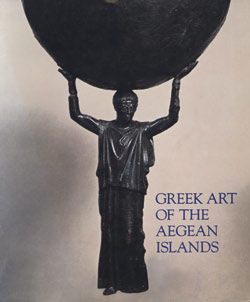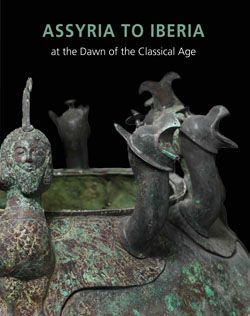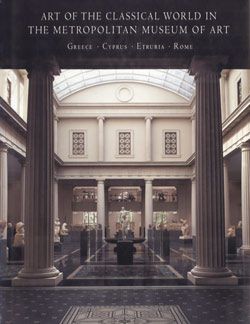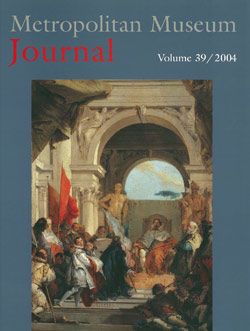Terracotta krater with lid surmounted by a small hydria
Attributed to the Cesnola Painter
Said to be from Kourion, Cyprus
During the eighth century B.C., the Geometric style that had originated in Athens spread throughout the Greek-speaking world. This beautifully proportioned vase found on Cyprus differs in a number of ways from the three monumental Geometric kraters from Attica displayed elsewhere in this gallery. The shoulder is subdivided by four handles rather than two, and the carpetlike decoration was applied over a light ceramic slip ground instead of directly onto the clay. Since the 1870s, scholars have debated where the vase was made; current opinion attributes it to a workshop on Euboea, an island just off the east coast of Attica, rather than to the island of Naxos, in the Cyclades.
In the center panel, between the handles, two stags or goats rise on their hind legs to nibble at a tree. While the graceful long-legged animals are represented in a typically Geometric style, the motif of animals flanking a sacred tree derives from Near Eastern art. The double axes used to fill the space above the horses that face the central panel bring to mind examples from the Minoan culture that flourished on Crete during the second millennium B.C. A number of Minoan bronze votives in this form are displayed elsewhere in the gallery.
This image cannot be enlarged, viewed at full screen, or downloaded.






